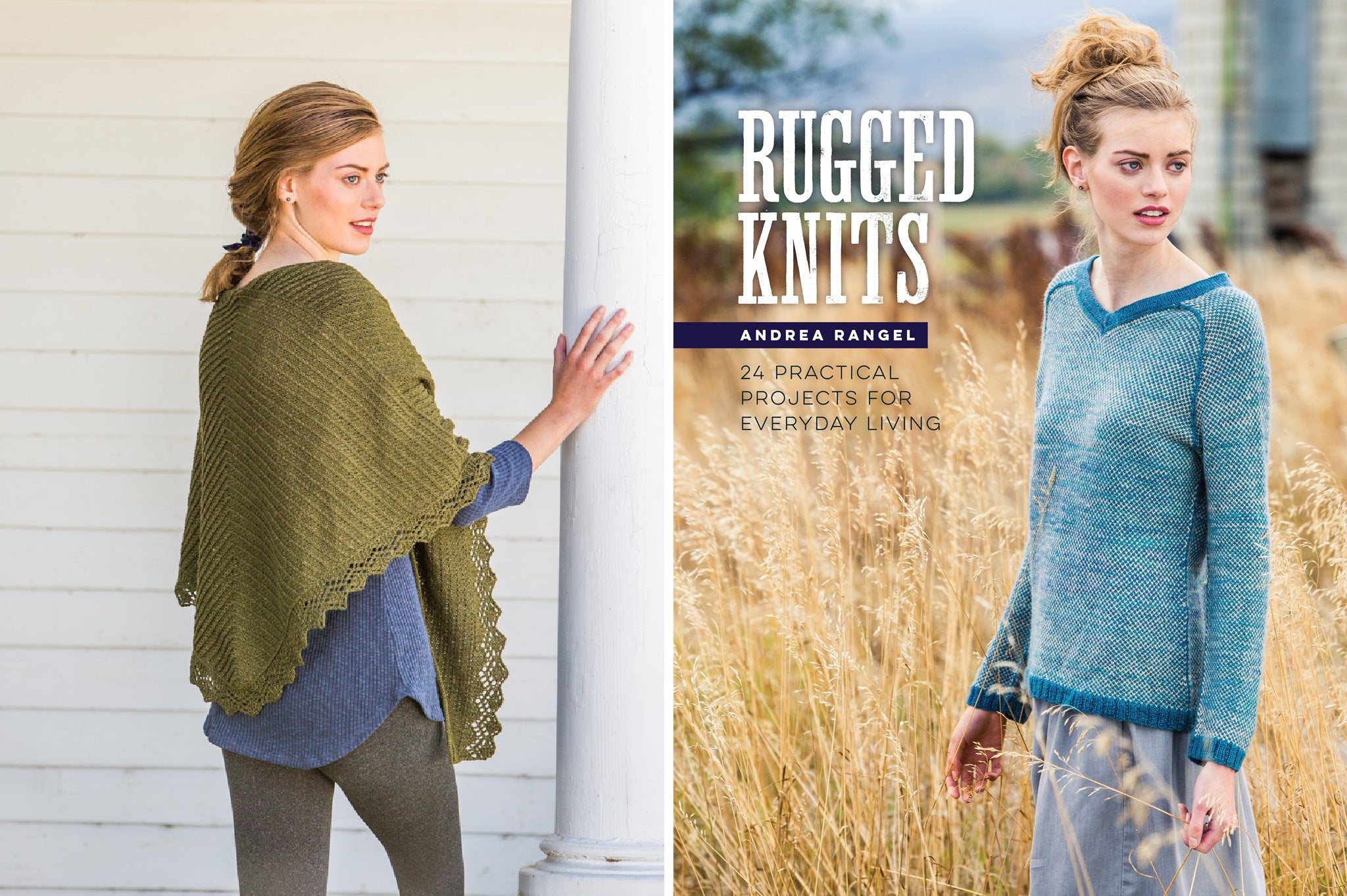rugged knits
Happy Saturday from Quince! Today we feature a guest post by talented designer Andrea Rangel, author of Rugged Knits, a beautiful book of 24 functional, lovely, and interesting knitting patterns for men and women—among them, the gorgeous Cedar Bough shawl worked in our very own wool/silk Tern.
Take it away, Andrea!

Cedar Bough shawl, from Rugged Knits. images © Interweave
Rugged Knits
When I was designing the projects for Rugged Knits, my goal was to create a collection full of patterns that knitters would love to make and wear for years to come. I wanted pieces that would be sturdy and functional, while also having a classic and beautiful look. Cedar Bough (pictured above) was the last pattern I designed for the book, and I think it rounds out all the other designs perfectly. It fills the requirements for being rugged - the stitch pattern is dense with clean, geometric lines, and the shape is functional for accessorizing for all sorts of cold-weather pursuits - while it maintains that sense of beauty that I strive for in my work with the sweet lace edging, mirrored geometric stitch pattern, and I-cord edge that tops the wingspan.
Quince & Co. Tern was an incredible delight to work with. It’s exceptionally soft, so it feels wonderful against the skin, and it has a subtle shine from the silk content that makes the stitch definition just pop. The tight twist and many plies make it a sturdy yarn, while the light weight and wool/silk fibre content give it a gentle elegance.
Cedar Bough isn’t a quick project—that twisted stitch pattern includes a lot of slipping stitches in order to make the pattern clear and clean, which makes the row gauge quite dense. But the stitch pattern is meditative, and I found it to be a lovely knitting companion for the time it took to make.
Construction
The shawl is worked end-to-end, including the lace edging. Once you’ve gotten going, the pattern is fairly intuitive. The lace edging is repeated throughout (so I recommend keeping track of lace edging rows and shawl body rows on separate counters), and the twisted stitch lines flow predictably. It’s important to pay attention so you know when the lines change direction, but the in-between spots are easy to follow by just looking at your knitting. The shape is created by increasing while working the first half of the shawl and decreasing while working the second half. After decreasing back down to a few stitches, you’ll bind off and then work an I-cord edging along the top edge.
Blocking
Wet blocking is the best way to get your shawl looking beautifully finished. After you’ve given your shawl a good gentle soak and squeezed the excess water out in a towel, lay the shawl flat on a pin-able surface. In order to get a straight top edge, thread blocking wires through your I-cord and then pin inside the wires, adjusting the fabric so that it matches the measurements given in the pattern.
To open up the lace edging, pin each lace point. When your shawl is completely dry, pull out the pins and you’ll discover beautiful drape, lush fabric, and a shawl you’ll want to wear for many seasons to come!
Thanks so much, Andrea, and congrats on creating such a rich and satisfying book—definitely one to return to again and again when seeking great projects and knitterly inspiration.
The Cedar Bough shawl would look fantastic in any shade of Tern. Some of our favorites:
tern colors, from top to bottom: kelp, mist, sea grass, and seaweed



















